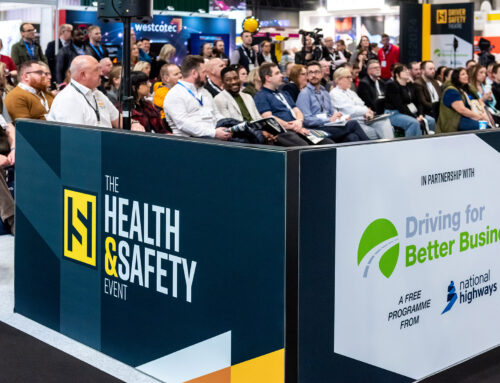1st September 2022
Jessica Truong
On a mission to end road deaths globally: Jessica Truong, Secretary General of the Towards Zero Foundation
Jessica Truong talks almost without pausing and every word she says is clear, concise and makes absolute sense. We catch her on a return from a UN high-level meeting in New York and a vehicle safety round table in Washington DC. Jessica is a tireless road safety advocate working on the world stage. Her international work includes leadership roles with the Towards Zero Foundation (TZF) and one of the key projects of the TZF is the Global New Car Assessment Program.
“Solutions already exist to reach zero road fatalities and there is no longer a need to wait for the ‘next big thing’ such as autonomous vehicles,” she says. “We know the measures now that can help us get to zero, but what we are lacking is that political will and the money to fund it. The UN has announced this is the second decade of action for road safety, and ‘action’ is the key word. We don’t need another decade of pondering. We just need to start implementing. We have talked about it for so many years – what is the delay? We don’t have to wait for anything else.”
Jessica is clear that, while road crashes are frequently attributed to human failings, vehicles and infrastructure, along with speed management, are the way forward. The World Health Organisation expects road trauma to be the seventh biggest killer globally by 2030 and her laser focus is on vehicle standards. Global NCAP highlights the scandal of double standards applied by vehicle manufacturers in different countries. A recent car-to-car crash test shows dramatically how the Hyundai Grand i10 sold in Mexico fares against the comparable Hyundai Accent sold in the US. Both models are the cheapest sedans [saloon cars] from the manufacturer in their respective markets. The car produced for the US market offers 6 airbags and Electronic Stability Control (ESC) as standard. However, the i10 model produced for Mexico and other Latin American markets is fitted with only two frontal airbags and would be rated as a zero-star car. Watch the Car-on-Car crash test here: https://youtu.be/2eGpXyAQzuU
The aim of Global NCAP is to democratise safety.
Why do vehicle standards in the US and Mexico matter here in the UK?
For years, the UK has played a leading role in reducing road risk, but since 2010 the long-term reduction in road death and injury has stalled.
On 6 July this year, a new package of 15 safety measures – the General Safety Regulation (GSR) – became mandatory on new vehicles manufactured in the EU and Northern Ireland. The measures play a part in the recommendations of the Global Plan for the United Nations Decade of Action for Road Safety 2021-2030, endorsed by the UK government.
This package of measures, which applies to new cars, vans, buses, coaches, and heavy goods vehicles, kick-starts a new decade of reducing deaths and serious injuries in crashes. The package includes automated emergency braking that detects pedestrians and cyclists, improved direct vision for HGV drivers, and a range of technologies such as intelligent speed assistance (ISA) to help drivers in complying with the rules of the road and providing protection for those both inside and outside the vehicle in the event of a crash.
The measures, described as ‘the biggest advance in vehicle safety since the seat belt’, particularly help avoid serious and fatal crashes and injuries and improve safety for vulnerable road users. They come at minimal cost to the taxpayer or consumer and would support the UK automotive sector. The technologies are also important to the UK’s ambitions for connected and automated vehicles and transport decarbonisation. The measures are integrated, designed to work together, and – road safety experts are agreed – they should be adopted as a package, not “cherry picked”.
Jessica Truong says that the European vehicle manufacturers that dominate the UK market could sell cars to a lower spec if the right regulations are not in place in the UK: “We see that time and time again in other countries that we work in, because manufacturers importing into a country that has low or no standards are free to import any vehicle. But we know that they can build safer cars for countries that have stringent safety standards.”
We talk about the UK’s new Highway Code that flips the old road hierarchy on its head, putting more responsibility on powered vehicles to protect vulnerable road users. Can it work? “We really must reconsider the whole way the system is designed, not just rely on telling people what to do. We need infrastructure in place that makes it difficult for a vehicle to encroach on pedestrian space as well as technology such as autonomous emergency braking that works to protect pedestrians and cyclists.
“Vehicle design can make a huge contribution; infrastructure can make a huge contribution; speed management cuts across these two. To get the best results, we need to combine all three because when the speed limit is set too high, it reduces or negates the safety benefits of infrastructure and vehicles. Road authorities need to consider the function of the road – what it’s for and who uses it. If the purpose of a road is to carry freight and move goods, we set a speed that works for it, but also design the network in a way that ensures safety for the users. If road space is assigned primarily for pedestrian use with some vehicle access, we need to manage the speed either by road design or by ISA. In essence, the design of the road network should meet both movement and safety needs.
“If you want to build a system to achieve zero road deaths, you must also accept systems like ISA which is currently available, it works, and is one of the rare technologies that can be retro-fitted. We’ve seen in London all the buses fitted with ISA with very good results. It’s been around for a long time and is proven to be effective so it’s disappointing that the UK has chosen not to mandate it. Hopefully it’s just a matter of time.”
What about autonomous vehicles? Will they play an important part in reducing road risk?
Jessica Truong is clear: “Don’t ignore the benefits of the technologies that are already available that will make a huge difference. We know that from the date any technology is mandated, it takes about 20 to 30 years for it to fully penetrate the market.
Van safety
Jessica says there is a huge opportunity in fleet safety in now focusing on vans.
“Commercial vehicles tend to lag behind passenger vehicles in both crash protection and crash prevention technologies. With an increase in the number of vans being used for work and delivery, we need to make sure that companies are making safer vehicle purchasing decisions to keep their employees safe on the roads. There are vans available for fleet managers to purchase now that have a better safety rating, that have safety technology: employers have a responsibility to ensure employees have a safe work-place and a van is an extension of that work-place.”
Driving for Better Business can help consumers to make informed choices when buying a vehicle for work. For guides to van safety ratings and advanced safety technology on vehicles, go to https://www.drivingforbetterbusiness.com/resources/search-results/?section=326&category=Vehicle%20Specifications






